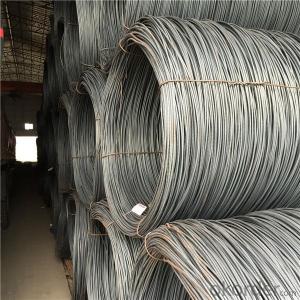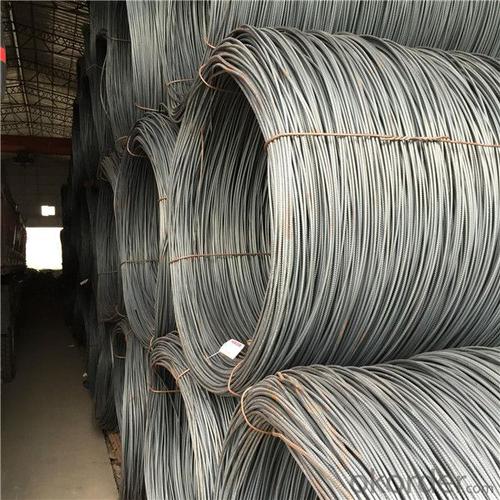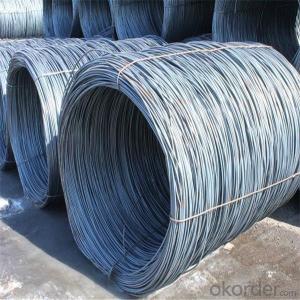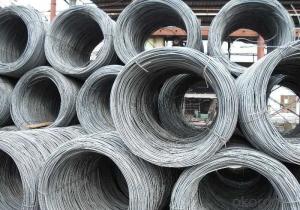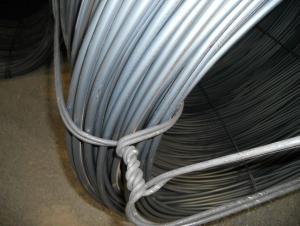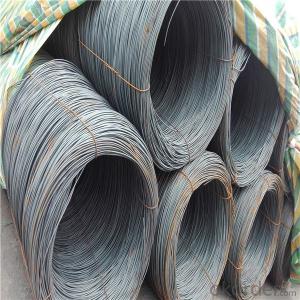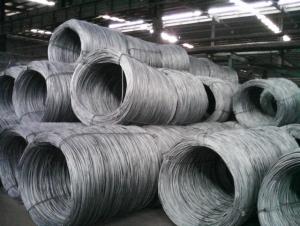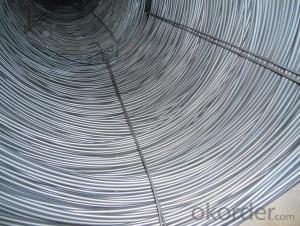Steel wire rod large stock 5.5mm-14mm different grad
- Loading Port:
- Shanghai
- Payment Terms:
- TT OR LC
- Min Order Qty:
- 50 m.t.
- Supply Capability:
- 14231 m.t./month
OKorder Service Pledge
OKorder Financial Service
You Might Also Like
Specification
Wire rod is used for many different products. Depending upon how it is cold formed and heat treated,
wire is used, for example, to produce not only wire ropes, barbed wire, wire mesh and nails, but also
springs, welded wire mesh and reinforcement wire.
Our service:
(1) We cooperate with famous factories with advanced equipment and well trained workers.
(2) We can provide factory price with trading company service.
(3) We continuously work on the improvement of our processes, guaranteeing
consistently high standards of quality to keep none compensation.
(4) We guarantee 24 hours response and 48 hours solution providing service.
(5) We accept small order quantity before formal cooperation.
(6) We deliver the agreed quality at the agreed time, reacting to changes in
customer wishes in a flexible way.
(7) Due to our volume and selling power, we have excellent freight rates with
shipping lines.
(8) We strive to always be fair and honest in our dealings with customers.
(9) We strive to work together with customers to achieve much more than we can
achieve alone.
(10) Through our passion and commitment we aim to be a market leader in all our
key markets. To maintain our position as market leader we must continue to add
value in all that we do.
Product Description :
Standard | AISI, ASTM, BS, DIN, GB, JIS |
Material/steel grade | Q195-Q235,SAE1006B,SAE1006CR, SAE1008B, SAE1008CR, SAE1010B, SAE1018B, or according to customers requirements |
Wire Gauge | 5.5-12mm |
Coil weight | 1.8-2.1mts |
MOQ | 25MT |
Delivery Time | 15-30 days after receipt of L/C or deposit by T/T |
Packing | In coil and load in container, if large quantity, by bulk vessel; Can be packed as customers' special requirements |
Payment terms | 1).100% irrevocable L/C at sight. 2).30% T/T prepaid and the balance against the copy of B/L. 3).30% T/T prepaid and the balance against L/C |
Application | widely used in machinery parts, manufacturing industry, electronics industry, metal tools and others |
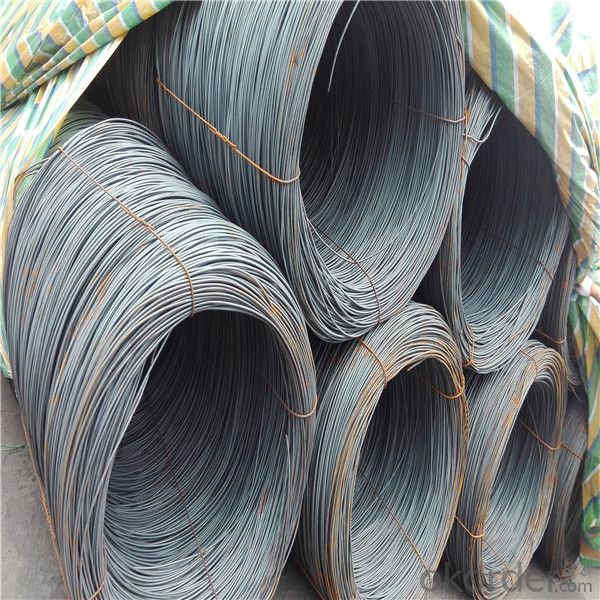
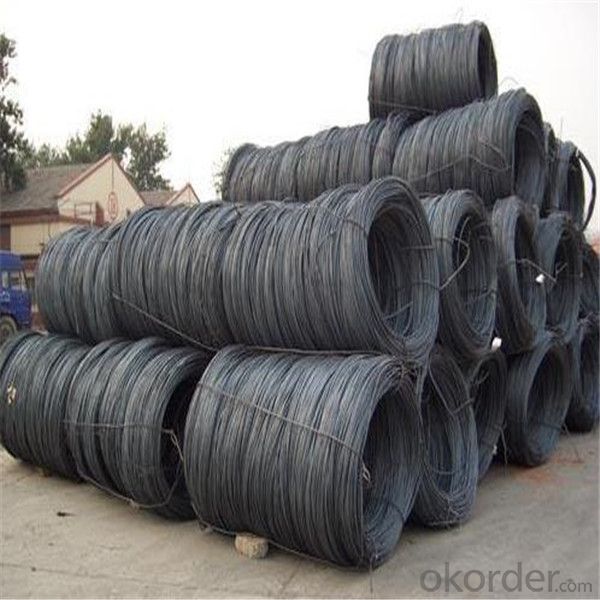
Application :
Mainly used in building and construction as binding wire, tie wire and baling wire; also can be make
for wire mesh.
Packing :
Hot-rolled wire rod is held in a unit with at least four steel straps in the
transverse direction and transported and stored without further packaging.
Before
the steel strapping is applied, the wire rod must be sufficiently compressed.
The strapping is fixed in the transverse direction with a single circumferential
strap so that the strapping does not slip and cause the coil to come apart.
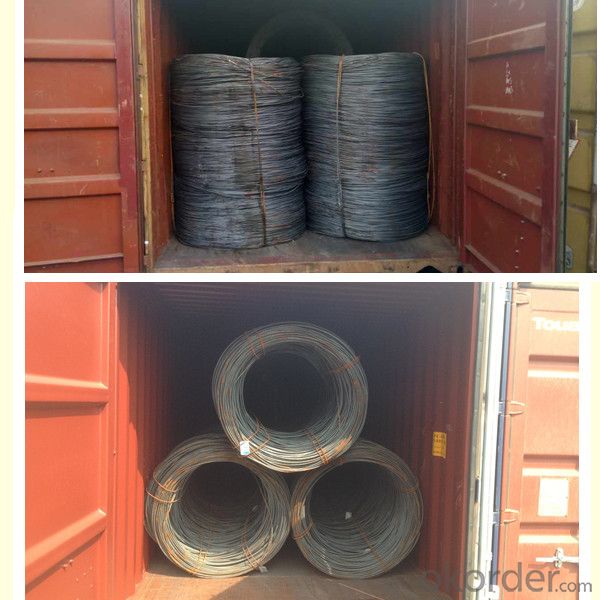
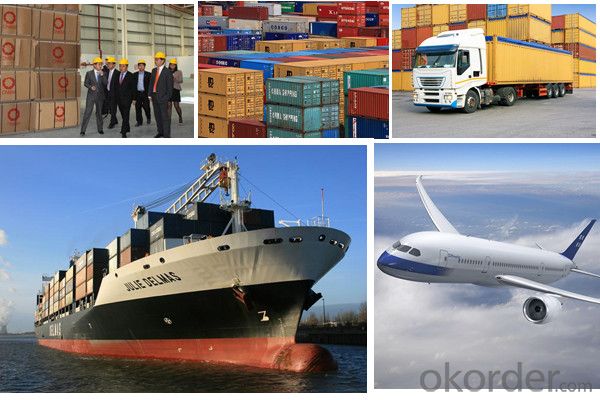
FAQ:
1.Q:Can you accept mixed order?
A: Yes, mixed acceptable .
2. Q: How can I buy CNBM products in my country?
A:Please send us an inquiry or email ,we will reply to you if there is distributor in your country
3. Q: Can we visit your factory?
A: Warmly welcome. Once we have your schedule, we will arrange the
professional sales team to follow up your case.
4. Q: How long does it take to get the product if i place an order?
A:With the process of your requirements,we will pack and deliver in 3
-7 days. If it is by sea shipment,it will take 15-45 days depending on different locations
- Q: What are the different types of steel wire rod dimensional inspection methods?
- There are several different types of steel wire rod dimensional inspection methods that are commonly used in the industry. These methods are employed to ensure that the dimensions of the steel wire rods meet the specified requirements and are suitable for their intended applications. Some of the main dimensional inspection methods include: 1. Caliper measurement: This is a basic but effective method that involves using a caliper tool to measure the diameter of the steel wire rod. The caliper provides a quick and easy way to obtain accurate measurements. 2. Micrometer measurement: Micrometers are commonly used for precision measurements in the steel industry. They provide a more accurate measurement than calipers and are typically used to measure the diameter of the wire rod. 3. Optical measurement: Optical measurement methods utilize cameras, lasers, or other optical devices to capture images or collect data about the dimensions of the steel wire rod. These methods can be non-contact and provide high precision measurements. 4. Laser scanning: Laser scanning technology is commonly used to measure the profile or shape of steel wire rods. It involves scanning a laser beam across the surface of the wire rod and capturing the reflected beam to determine the dimensions. 5. Ultrasonic measurement: Ultrasonic measurement methods use sound waves to measure the dimensions of the steel wire rod. Ultrasonic waves are sent through the material, and the time it takes for the waves to bounce back is measured to determine the dimensions. 6. Coordinate measuring machine (CMM): CMMs are advanced measurement systems that use probes and computer software to measure the dimensions of the steel wire rod. They can provide highly accurate and precise measurements. 7. Visual inspection: Visual inspection is a simple method that involves visually examining the steel wire rod for any visual defects or deviations from the specified dimensions. This method is often used as a preliminary inspection before employing more advanced measurement techniques. These are just a few of the various methods used to inspect the dimensions of steel wire rods. Each method has its own advantages and limitations, and the choice of the appropriate method depends on factors such as the required level of accuracy, the complexity of the wire rod's shape, and the available resources and equipment.
- Q: How is steel wire rod transported from the manufacturing plant to the customer?
- Steel wire rod is typically transported from the manufacturing plant to the customer using various modes of transportation such as trucks, trains, and ships. The most common method is through truck transportation, where the wire rods are loaded onto flatbed trucks and transported to the customer's location. For longer distances, trains and ships are utilized to transport large quantities of wire rods. These transportation methods ensure efficient and timely delivery of steel wire rod to the customer, meeting their requirements.
- Q: What are the major challenges faced by the steel wire rod industry?
- Today's market presents several major challenges for the steel wire rod industry. Among these challenges, the fluctuation in raw material prices, particularly iron ore and coal, stands out. The production of steel wire rods heavily relies on these inputs, and any significant price increase can have a substantial impact on the overall cost of production. Additionally, the industry faces intense global competition, both domestically and internationally. To stay competitive, steel wire rod manufacturers must constantly improve their production efficiency, reduce costs, and enhance product quality. Moreover, the industry must address environmental regulations and sustainability concerns. The energy-intensive processes involved in steel wire rod production can lead to high carbon emissions. To meet the increasing demand for sustainability, manufacturers must invest in cleaner technologies and adopt eco-friendly practices to reduce their carbon footprint. Furthermore, fluctuating demand for steel wire rods poses a challenge. The demand for these rods in sectors such as construction, automotive, and manufacturing is subject to economic cycles and external factors. Manufacturers must closely monitor market trends and adjust their production accordingly to avoid overproduction or underutilization of capacity. In addition, technological advancements present a challenge for the industry. With the rise of automation and digitalization, steel wire rod manufacturers must invest in advanced technologies to improve production efficiency, reduce downtime, and enhance product quality. However, this requires significant capital investment and skilled labor, which can be a challenge for some companies. Finally, the industry must address the issue of counterfeit products. Counterfeit steel wire rods can pose safety risks to end-users. Manufacturers must implement strict quality control measures and collaborate closely with regulatory authorities to prevent the circulation of counterfeit products in the market. In conclusion, the steel wire rod industry is confronted with challenges such as fluctuating raw material prices, intense global competition, environmental regulations, fluctuating demand, technological advancements, and the issue of counterfeit products. Overcoming these challenges necessitates continuous innovation, strategic planning, and a focus on sustainability to ensure the long-term success of the industry.
- Q: How are steel wire rods used in the manufacturing of mesh screens for filtration and separation?
- Steel wire rods are an essential component in the manufacturing process of mesh screens for filtration and separation. These wire rods, typically made of high-quality stainless steel, are used to create the mesh structure of the screens. Firstly, the steel wire rods are subjected to a series of processes such as drawing, annealing, and surface treatment to enhance their mechanical properties and corrosion resistance. This ensures that the resulting mesh screens are durable and can withstand harsh operating conditions. Next, the wire rods are fed into a specialized machine called a wire mesh weaving loom. This machine weaves the individual wires together in a crisscross pattern, creating a tightly-knit mesh. The size and spacing of the mesh can be customized depending on the specific filtration or separation requirements. The woven mesh is then inspected for defects and trimmed to the desired dimensions, ensuring a uniform and precise screen. In some cases, additional processes such as heat treatment or coating may be applied to further enhance the performance or functionality of the mesh screens. Once the mesh screens are ready, they can be used in a wide range of applications for filtration and separation purposes. For example, they can be installed in industrial filtration systems to remove impurities from liquids or gases. They can also be used as sieves or strainers to separate particles of different sizes. The mesh screens provide an effective barrier while allowing the desired substances to pass through, ensuring efficient filtration and separation processes. In summary, steel wire rods play a crucial role in the manufacturing of mesh screens for filtration and separation. They are transformed into woven mesh structures that provide reliable and durable solutions for various industries, ensuring effective filtration and separation of substances based on their specific requirements.
- Q: What are the different surface defects that can impact the weldability of steel wire rod?
- Some common surface defects that can impact the weldability of steel wire rods include scale, rust, oil or grease contamination, and surface roughness. These defects can affect the quality and integrity of the weld, leading to weak or failed welds. Therefore, it is crucial to thoroughly clean and prepare the surface of the steel wire rod before welding to ensure a strong and durable weld joint.
- Q: How is steel wire rod used in the manufacturing of wire forms for elevator shafts?
- Wire forms for elevator shafts require the use of steel wire rod, which is an essential component in their manufacturing process. This long cylindrical steel product is chosen for its strength and flexibility, ensuring the safety and reliability of the elevator system. To begin with, steel wire rod is the primary raw material used in the production of wire forms for elevator shafts. Through various processes such as drawing, annealing, and surface treatment, the wire rod is improved in terms of its mechanical properties and surface finish. These enhancements are necessary to make the steel wire rod suitable for further manufacturing. Once the steel wire rod is prepared, it is shaped into different wire forms specifically designed for elevator shafts. These wire forms, including guide rails, safety ropes, suspension cables, and counterweight ropes, have vital roles in the elevator system, contributing to its smooth operation and ensuring passenger safety. The wire forms made from steel wire rod are renowned for their high tensile strength, which is crucial for bearing the heavy loads and constant movement experienced by elevator systems. These wires must support the weight of the elevator car and its occupants while maintaining their structural integrity over time. Steel wire rod provides the necessary strength and durability to meet these requirements. Moreover, steel wire rod offers exceptional flexibility and elasticity, allowing the wire forms to withstand the dynamic movements of the elevator system. Elevators undergo constant vertical and horizontal motions, as well as vibrations, which can exert stress on the wire forms. The flexibility of steel wire rod helps absorb and distribute these forces, reducing the risk of damage or failure. In addition to its mechanical properties, steel wire rod is also resistant to corrosion, ensuring long-lasting performance in elevator shafts. Elevator systems are often exposed to environmental factors such as humidity and temperature changes, which can lead to corrosion and deterioration. By utilizing steel wire rod, manufacturers can guarantee that the wire forms will remain reliable and safe for an extended period. In conclusion, the use of steel wire rod is crucial in the manufacturing of wire forms for elevator shafts. Its high tensile strength, flexibility, and corrosion resistance make it an ideal material for producing wire forms that can withstand the demanding conditions of elevator systems. By incorporating steel wire rod, manufacturers can create wire forms that are both safe and durable, contributing to the smooth operation of elevators and the security of passengers.
- Q: What are the different surface treatments for steel wire rod?
- Some of the different surface treatments for steel wire rod include galvanizing, phosphating, and coating with a polymer or plastic material.
- Q: How are steel wire rods used in the production of wire hangers for hanging clothes?
- Wire hangers for hanging clothes require steel wire rods as a vital component. These rods are typically made from high-quality, durable steel, which provides the necessary strength and rigidity to support the weight of garments. To create the hangers, the first step in the production process involves cutting the steel wire rods to the desired length. This can be done using specialized machinery or manual cutting methods. Once cut, the rods are then bent into the familiar hanger shape, usually with a combination of automated bending machines and skilled workers. The steel wire rods are shaped to form the top hook of the hanger, allowing it to be hung on a closet rod or other hanging mechanisms. Additionally, the rods are bent to create the curved body of the hanger, which provides a secure and stable structure for hanging clothes. After the basic shape of the hanger is formed, the steel wire rods may undergo further processes to enhance their functionality and appearance. This could involve coating the rods with a layer of protective material, such as plastic or vinyl, to prevent rusting and create a smooth surface for delicate fabrics. The hangers can also be painted or coated with various colors or finishes to match different branding or aesthetic preferences. In conclusion, steel wire rods are indispensable in the production of wire hangers for hanging clothes. Their strength, durability, and versatility make them an ideal material for creating hangers capable of supporting a wide range of garments. Whether in homes, retail stores, or laundry facilities, wire hangers made from steel wire rods are a staple tool for organizing and displaying clothes.
- Q: What are the common production processes for silver-coated steel wire rod?
- The common production processes for silver-coated steel wire rod include wire drawing, cleaning and preparation, annealing, coating application, and final inspection.
- Q: How is steel wire rod used in the production of wire mesh for acoustic panels?
- Steel wire rod is used in the production of wire mesh for acoustic panels as it serves as the primary material for creating the mesh structure. The wire rod is typically drawn through a series of dies to obtain the desired diameter and then woven or welded together to form the wire mesh. This mesh provides the necessary support and stability to the acoustic panels, allowing sound waves to pass through while reducing noise and enhancing sound absorption.
Send your message to us
Steel wire rod large stock 5.5mm-14mm different grad
- Loading Port:
- Shanghai
- Payment Terms:
- TT OR LC
- Min Order Qty:
- 50 m.t.
- Supply Capability:
- 14231 m.t./month
OKorder Service Pledge
OKorder Financial Service
Similar products
Hot products
Hot Searches
Related keywords
